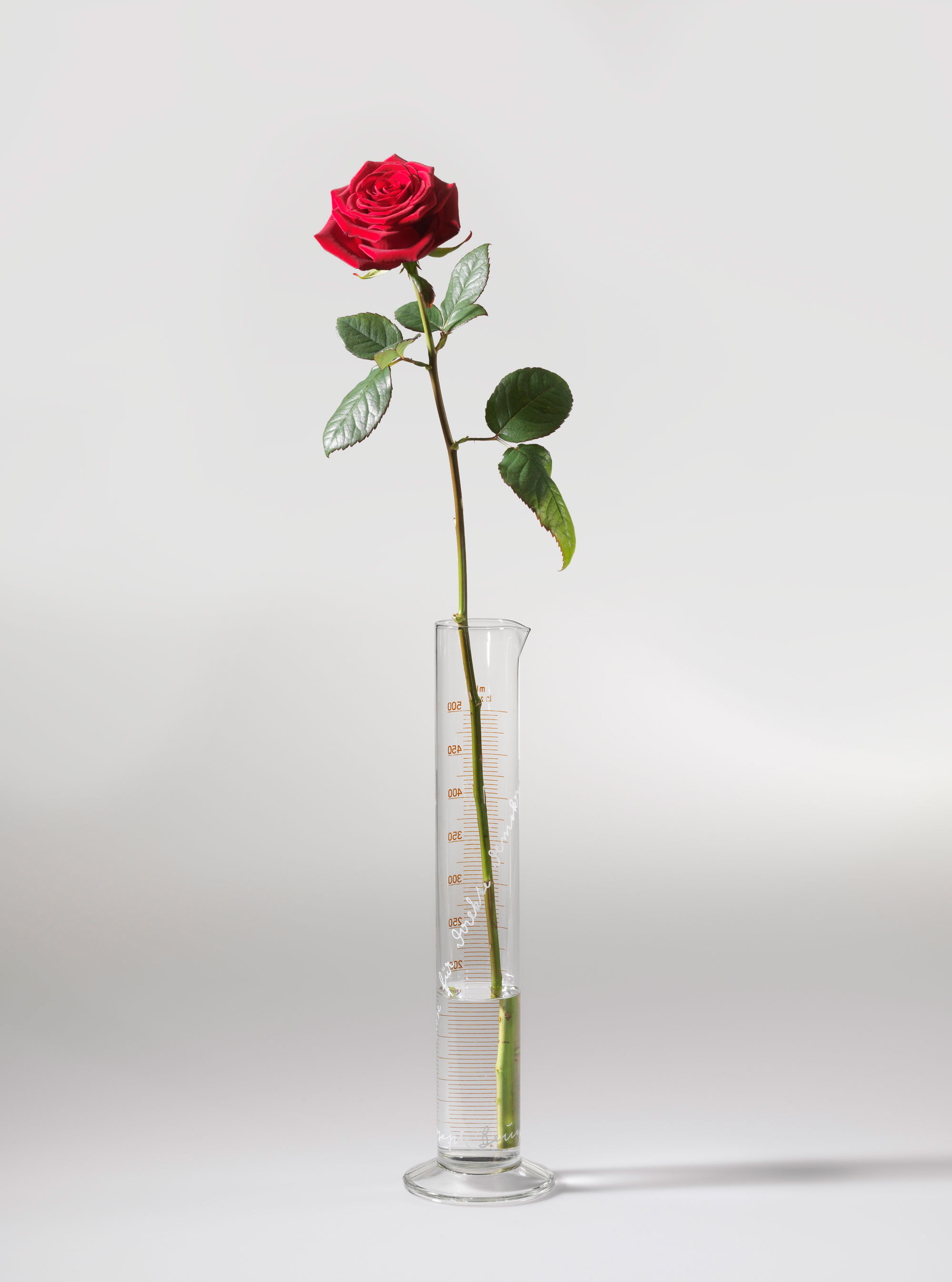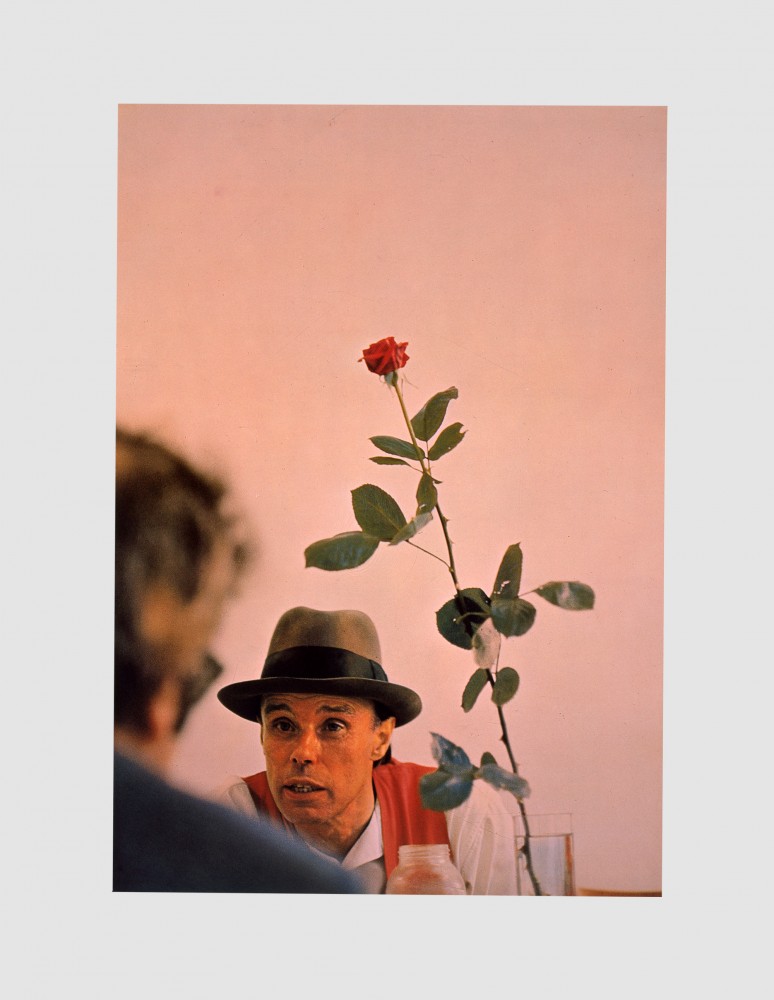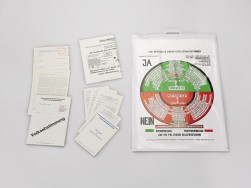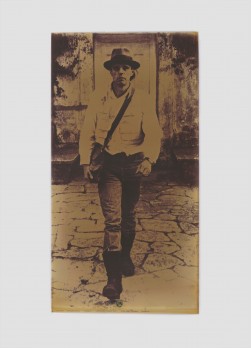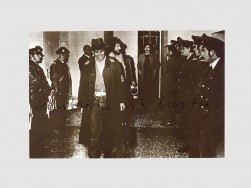Rose for Direct Democracy
[Rose für Direkte Demokratie]
- 1973
- Graduated glass cylinder, with inscription. 33.5 x 5 cm dia.
certificate [not shown] on printed letter paper, 29.5 x 21 cm - Edition: unlimited; copies 1-440 signed and numbered on certificate, with handwritten addition ‘Rose’ stamped; copies 441 and over with facsimile certificate
- Publisher: Edition Staeck, Heidelberg
- Catalogue Raisonné No.: 71
At the documenta 5 exhibition in Kassel, West Germany in 1972, Beuys established a ‘political bureau’ for the Organisation for Direct Democracy Through Free Collective Referendum, a group he had recently co-founded. Throughout the hundred days of the exhibition, he spoke and debated with exhibition visitors, putting forward his ideas for reshaping society through creative activity. Though his proposals were often radical, Beuys worked hard to distance himself from groups like the Red Army Faction (R.A.F.) in West Germany and the Red Brigades (B.R.) in Italy, who at this time were advocating violence as a means of achieving social revolution.1 In contrast to this position, Beuys emphasised his wish for a more peaceful, evolutionary route to societal development.
On his desk at documenta 5 stood a slender glass vase, in which a fresh-cut red rose was placed each day. The multiple Rose for Direct Democracy derives from this vase, but consists of a graduated cylinder, on which the work’s title is inscribed. Spiraling upward from the cylinder’s base, the inscription follows the direction of the rose’s growth, evoking the smooth trajectory along which Beuys hoped to see society progress. The petals of the rose, which differ radically in appearance from the rest of the plant, became a signifier of this process in Beuys’s eyes, since they emerge by means of a gradual transformation of its leaves. As he noted in this connection several years after the exhibition, ‘Bud and bloom are in fact green leaves transformed. So in relation to the leaves and the stem the bloom is a revolution, although it grows through organic transformation and evolution.’2
We Won’t Do It Without the Rose, 1972
Colour offset on cardstock, with handwritten text
80 x 55.8 cm
Edition: 80 + XX, signed and numbered
Publisher: Edition Staeck, Heidelberg
Photo: © Mario Gastinger, Photographics, München
Beuys made his opposition to the methods of the R.A.F. explicit at documenta 5, with a sculptural work entitled Dürer, I personally conduct Baader+Meinhof through the Documenta 5(1972). His intention in creating this piece was to bring their ideas (who were also known as the Baader–Meinhof Group) into contact with ‘a wider understanding of freedom’. (Beuys in Caroline Tisdall, Joseph Beuys (London: Thames & Hudson, 1979), 274.) ↩
Beuys in ibid., 275. ↩
© H. Koyupinar, Bayerische Staatsgemäldesammlungen
